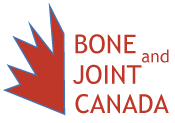Many individuals experiencing osteoarthritis develop symptoms, such as pain which results in changes to their ability to move and can reduce their ability to undertaken their normal activities including physical activity, such as walking and stair climbing, and participation in sports for those individuals who are more active. As their function becomes more restricted many people access care through their health care providers including physicians, physiotherapists and chiropractors. The international guidelines tell us that the management strategy for osteoarthritis require individuals to have education and exercise. As the disease progresses the individuals may also chose to use medications for pain relief. For a few there may be additional medical consultations required such as for pain management or surgery.
To identify the best practices in rehabilitation programs for individuals who have accessed care through their physicians, physiotherapists or chiropractors, BJC has undertaken a review of programs across Canada where a coordinated approach has been developed specifically for people with OA.
Through this review the following factors were noted as important for a comprehensive program:
- Links to medical management through the primary care physician including the management of co morbidities
- Mechanism to link individuals to specialist consultation
- Coordinated program that includes:
- Education to promote awareness of disease and self management strategies
- Exercise program that is:
- Evidence based
- Promotes neuromuscular stabilization of the lower extremity
- Can be encompassed into the individuals daily functional routine
- Mechanism to link individuals to community services of their choice
- Ongoing support to address questions and concerns
- Uses of outcome measures to track improvement on a basis that promotes sustainability of improvements
A summary of each of the programs that were reviewed will be provided to assist in identifying the best practice in services coordination for effective management of individuals with moderate symptomatic OA to promote independent ongoing symptom management and functional improvement.
Additional work will be undertaken to review how these program elements can be used for individuals who are earlier in their disease process and who may not be experiencing symptoms that significantly affect their daily function.
